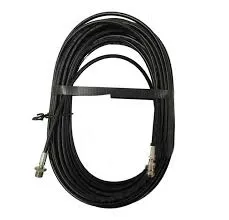Understanding the Distinction Between HFC 134a and R134a Refrigerants
The terms HFC-134a and R-134a are often used interchangeably, but they refer to the same chemical compound known as Hydrofluorocarbon 134a. This compound is a refrigerant, primarily used in air conditioning and refrigeration systems. The chemical formula for R-134a is C2H2F4, indicating that it is composed of carbon, hydrogen, and fluorine atoms.
The primary difference between HFC-134a and R-134a lies in the nomenclature rather than the chemical composition. HFC stands for Hydrofluorocarbon, which classifies R-134a within a group of refrigerants that do not deplete the ozone layer, unlike the older chlorofluorocarbons (CFCs). Each refrigerant is assigned a designation; hence, R-134a is the common name used in refrigeration applications.
R-134a has several advantages that have made it a popular choice in the automotive and refrigeration industries. It is non-toxic and non-flammable, meaning that it poses less risk to human health and safety compared to other refrigerants. Moreover, it has a low global warming potential (GWP) compared to its predecessors, making it a more environmentally friendly option. This aspect of R-134a is particularly important given the growing emphasis on reducing greenhouse gas emissions.
what is the difference between hfc 134a and r134a

However, R-134a is not without its drawbacks. Its GWP, while lower than many other refrigerants, is still significant enough that environmental regulations are pushing for the phasing out of R-134a in favor of even more sustainable alternatives. This trend is evident in various regions and industries where new regulations favor refrigerants with a GWP of less than 150.
In summary, the difference between HFC-134a and R-134a primarily hinges on terminology. Both terms refer to the same refrigerant, which has been widely used and has a variety of applications due to its beneficial properties. Nevertheless, as environmental standards evolve, the transition towards more eco-friendly refrigerants suggests that R-134a's time in the spotlight may be limited. Understanding these dynamics is essential for anyone involved in the refrigeration and automotive industries, as they may need to adjust to new standards and technologies in the near future.
-
Ultimate Spiral Protection for Hoses & CablesNewsJun.26,2025
-
The Ultimate Quick-Connect Solutions for Every NeedNewsJun.26,2025
-
SAE J1401 Brake Hose: Reliable Choice for Safe BrakingNewsJun.26,2025
-
Reliable J2064 A/C Hoses for Real-World Cooling NeedsNewsJun.26,2025
-
Heavy-Duty Sewer Jetting Hoses Built to LastNewsJun.26,2025
-
Fix Power Steering Tube Leaks Fast – Durable & Affordable SolutionNewsJun.26,2025

